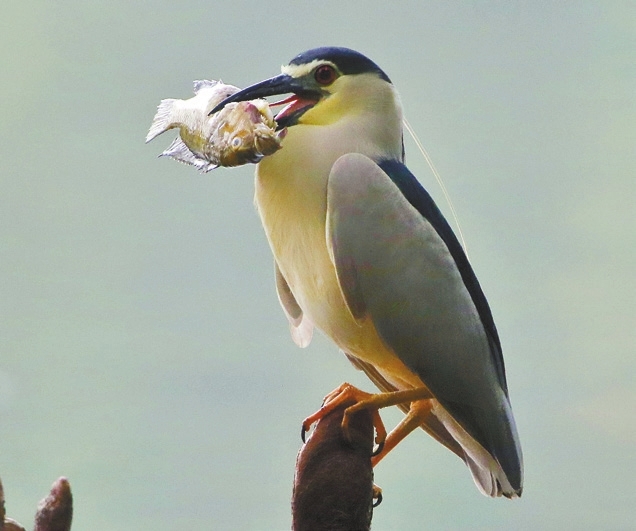
As enigmatic and beautiful as it can be, the black-crowned night heron (Nycticorax nycticorax) is one of the several heron species we can enjoy in our beautiful city of Shenzhen. Along with the great egret, the small egret and the Chinese pond heron, the night heron is one of the most ubiquitous heron species in the city, and can be easily found in almost every park in town. This amazing bird displays a blackish dark blue cap over their head and back, contrasting with a beautiful gray color that covers the rest of the body. The eyes are of a vivid red and their legs are yellow. They usually keep the head tucked and hold a perching position over tree branches, waiting for an opportunity to fly down and partake of food that comes into their view. Youngsters look a bit different from adults and can be easily mistaken for other species of herons. Their body is covered by brown feathers with stripes all over, and the eyes are yellow. Their necks are usually stretched and the body is not as stocky as in the adults. Although active during the day, night herons prefer nighttime feeding when they look for fish, frogs or other prey in ponds, rivers or even the ocean, thus earning their name. These birds are communal, and you may see several couples nesting in the same tree at the same time, and even together with other heron species such as the little egret. They are presumably monogamous, meaning they have only one mate for life, with whom they will reproduce once per reproductive season. The female lays up to five eggs per clutch, and the male will help with their incubation and feeding. Some may take care of other couples’ offspring, as they are unable to recognize their own. The night heron is yet another good reason to keep on working hard to preserve our environment so that we can enjoy the magnificent presence of this and other dozens of bird species that call our city their home. | 
